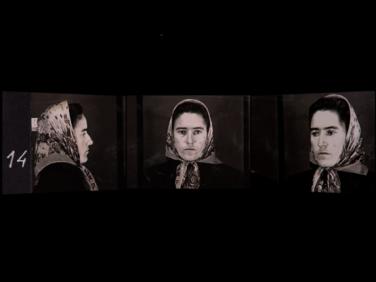
Natureza morta Susana de Sousa Dias, Portugal, 2015, 72’. Loop, digital projection
“When I started to make Still Life , I was faced with a challenge. How do you show the reverse side of the dictatorship using archival footage produced by the dictatorship? Looking at the images on the editing table, slowing the imagery down was a natural process during my viewing. As I looked and looked, I began to understand that in certain images, I could see symptoms of a kind of disease inside the messages the regime sought to convey. The search for these symptoms became the main démarche of the film.
I looked at hundreds of hours of archival footage, and when I finally began editing what became Still Life , I reduced it to 20 hours. While my first version of the film used 45 minutes of archival footage, one year later and after going through many other versions, the final 72-minute version incorporated only 12 minutes of the original archival material.
I came to understand that it is not necessary to juxtapose several images to communicate an idea, it is enough to look at one single image more carefully. One of the methods I deployed was montage within the shot. This approach involves decomposing the space – the visible space – revealing and juxtaposing various parts of the image in different ways. I simultaneously worked with the duration. Basically, I applied three formal principals to expose the most revealing aspects of the images: reframing, slow motion, and fades in/ fades out.”
Susana de Sousa Dias
Nola erakutsi diktadura baten atzealdea ¿Cómo mostrar el reverso posible de la dictadura a través de las imágenes producidas por esa misma dictadura?dikaturak berak ekoiztutako irudien bidez?
